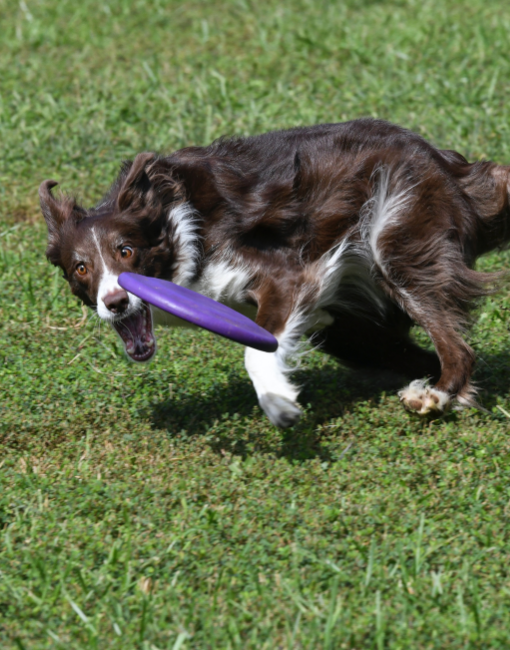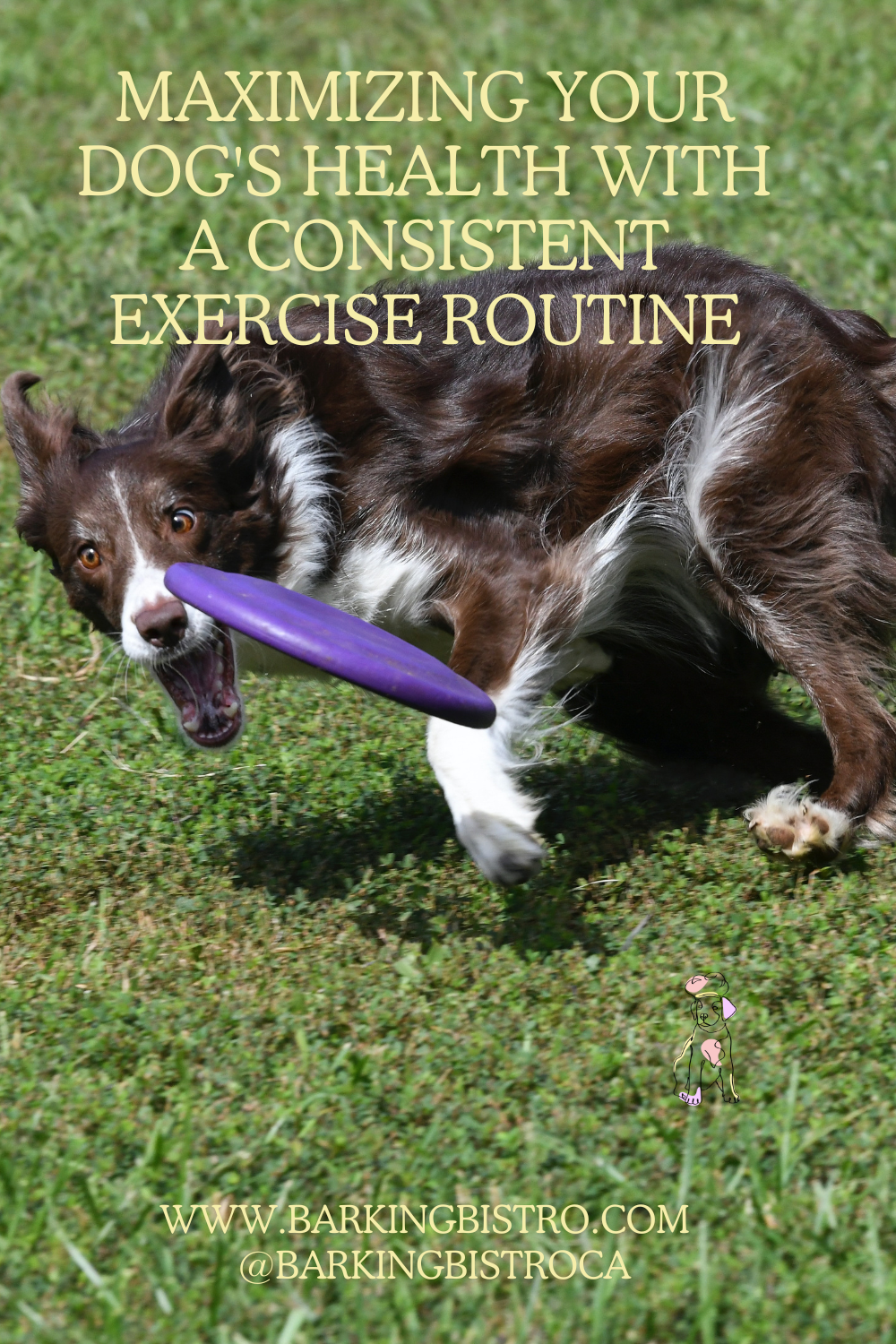As a dog owner, I know how important it is to keep our furry friends healthy and happy. One of the most important things we can do for our dogs is to provide them with regular exercise. Not only does exercise help maintain a healthy weight, but it also provides mental stimulation and can prevent behavioural problems. In this article, I will be discussing the importance of exercise for dogs, how much exercise your dog needs, the benefits of a consistent exercise routine, common exercise mistakes and how to avoid them, types of exercise for dogs, incorporating playtime into your dog’s exercise routine, tips for creating a consistent exercise routine for your dog, tracking your dog’s progress and adjusting the routine as needed, additional ways to maximize your dog’s health, and concluding with a summary of the article.

The Importance of Exercise for Dogs
Dogs are naturally active animals and require regular exercise to maintain their physical and mental health. Exercise helps keep them physically fit, provides mental stimulation, and can prevent behavioural problems caused by boredom and lack of activity. Dogs who do not receive regular exercise are at risk of becoming overweight, which can lead to a host of health problems, such as joint issues and heart disease.
Additionally, regular exercise can help prevent destructive behaviour in dogs. Dogs left alone for long periods without any mental or physical stimulation may become bored and resort to destructive behaviour such as chewing or digging. Exercise can provide an outlet for their energy and give them a healthy way to release their pent-up energy.
How Much Exercise Does Your Dog Need?
The amount of exercise your dog needs depends on several factors, such as age, breed, and overall health. Generally, dogs require at least 30 minutes to 2 hours of exercise daily. However, this can vary depending on the individual dog. For example, a young, active dog may require more exercise than an older, less active dog. Talking to your veterinarian about your dog’s specific exercise needs is important to ensure they get enough physical activity.
Benefits of a Consistent Exercise Routine for Your Dog
A consistent exercise routine can provide numerous benefits for your dog. Regular exercise can help maintain a healthy weight and prevent obesity-related health problems. It can also help strengthen their muscles and bones, improve their cardiovascular health, and increase their overall endurance.
Exercise can also provide mental stimulation for your dog, which can help prevent behavioural problems caused by boredom. A consistent exercise routine can also help improve your dog’s mood and reduce stress levels. Additionally, exercise can help strengthen the bond between you and your dog, as it provides an opportunity for quality time together.
Common Exercise Mistakes and How to Avoid Them
One of dog owners’ most common exercise mistakes is over-exercising their pets. While exercise is important for your dog’s health, too much exercise can be harmful. Over-exercising can cause dehydration, exhaustion, and even injuries such as muscle strains or joint problems. It’s important to gradually increase the amount of exercise your dog receives over time and to monitor their behaviour and physical condition during and after exercise.
Another common mistake is not providing enough mental stimulation during exercise. Dogs need mental stimulation just as much as physical exercise. Without mental stimulation, dogs can become bored and may resort to destructive behaviour. Incorporating games and training exercises into your dog’s exercise routine can provide the mental stimulation they need.
Types of Exercise for Dogs
Many different types of exercise can benefit your dog. One of the most common forms of exercise is walking. Walking provides low-impact exercise and can be done almost anywhere. Other types of exercise include running, hiking, swimming, and agility training. Choosing activities appropriate for your dog’s age, breed, and overall health is important.
Incorporating Playtime into Your Dog’s Exercise Routine
Playtime is an important part of any dog’s exercise routine. Playtime provides mental stimulation and can help improve your dog’s mood and reduce stress levels. Some examples of playtime activities include fetch, tug-of-war, and hide-and-seek. Choosing safe and appropriate activities for your dog’s age and breed is important.
Tips for Creating a Consistent Exercise Routine for Your Dog
Creating a consistent exercise routine for your dog can be challenging but important for their overall health and well-being. Some tips for creating a consistent exercise routine include setting a regular schedule, gradually increasing the amount of exercise your dog receives, providing mental stimulation during exercise, and choosing activities that are appropriate for your dog’s age, breed, and overall health.
Tracking Your Dog’s Progress and Adjusting the Routine as Needed
It’s important to track your dog’s progress and adjust their exercise routine as needed. This can help ensure they are receiving enough physical activity and mental stimulation. Some ways to track your dog’s progress include monitoring their weight and overall physical condition, observing their behaviour during and after exercise, and talking to your veterinarian about their specific exercise needs.
Additional Ways to Maximize Your Dog’s Health
In addition to exercise, there are many other ways to maximize your dog’s health. Feeding your dog a healthy, balanced diet and providing regular veterinary care are both important for their overall well-being. Providing your dog with plenty of mental stimulation, such as interactive toys and training exercises, is also important.
Conclusion
In conclusion, regular exercise is important for your dog’s physical and mental health. A consistent exercise routine can provide numerous benefits, including maintaining a healthy weight, preventing behavioural problems, and improving overall well-being. By avoiding common exercise mistakes, choosing appropriate activities, and incorporating playtime into your dog’s routine, you can help ensure they receive the physical and mental stimulation they need to stay healthy and happy. Remember to track your dog’s progress, adjust their routine as needed, and provide them with plenty of mental stimulation and veterinary care to maximize their overall health.
Photo by Robin Jonathan Deutsch on Unsplash

